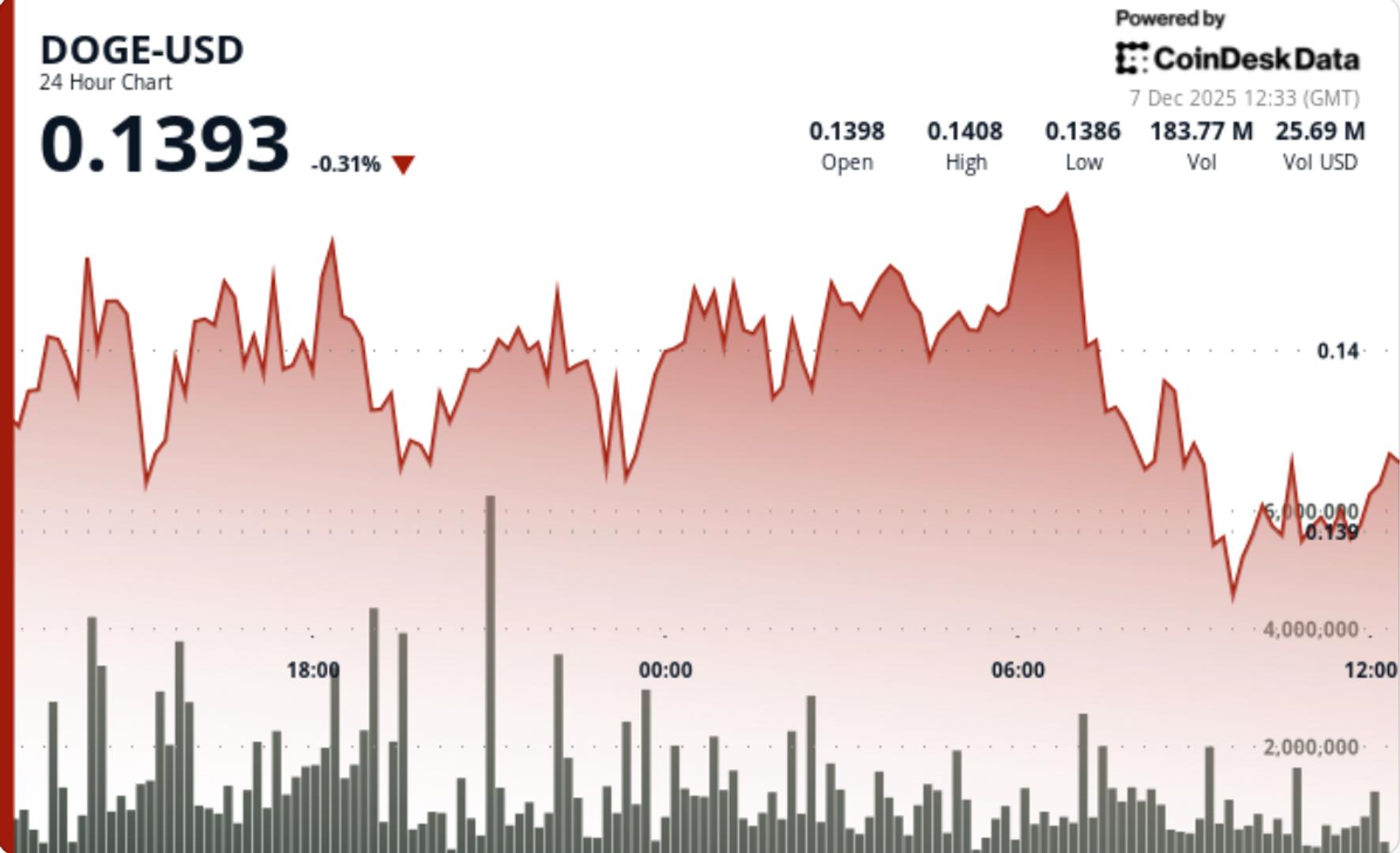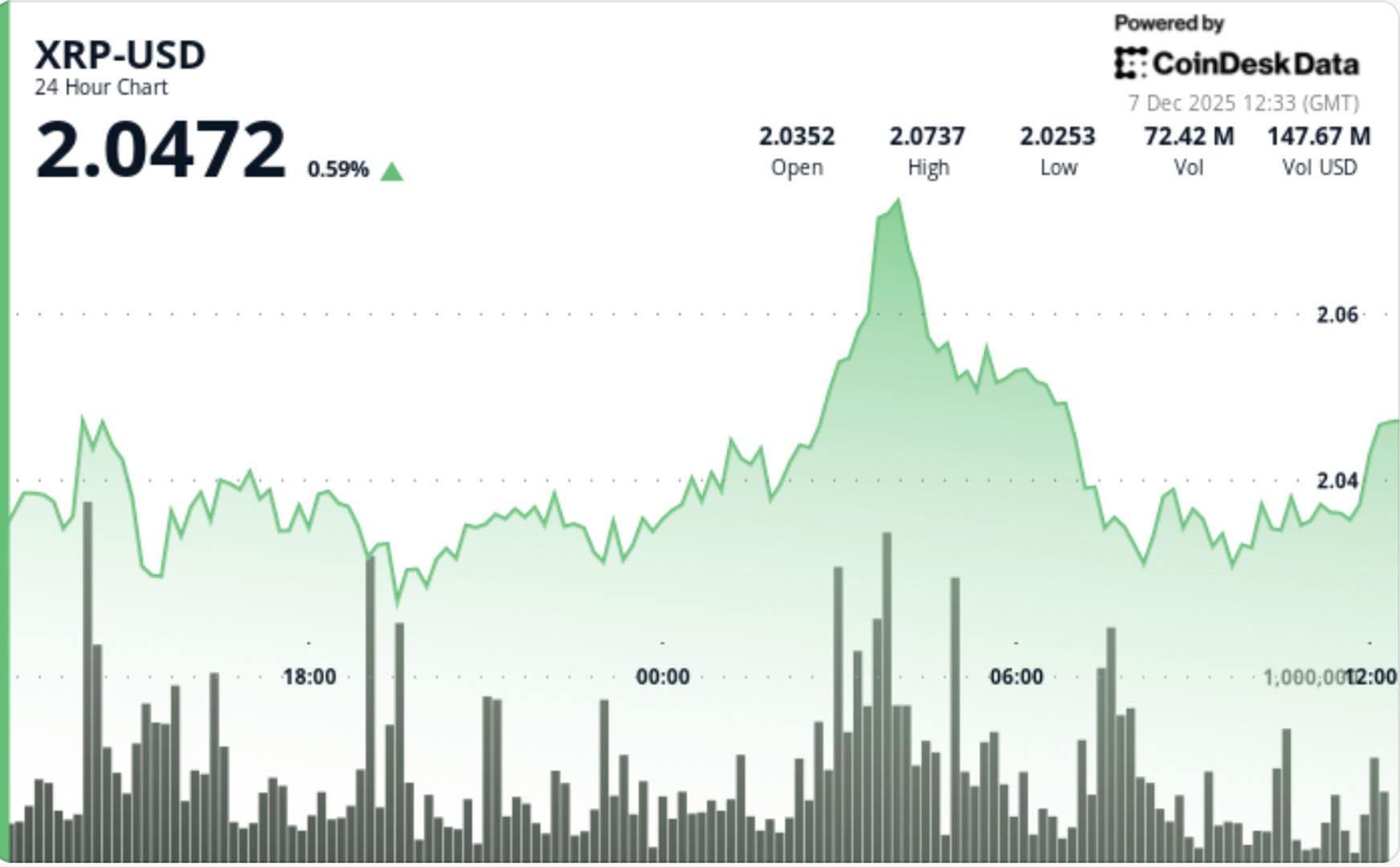
Ethereum’s New Cheerleader on Wall Street: A Q&A With Vivek Raman
Ethereum is facing an identity crisis. Its native token, ether (ETH), is underperforming against competitors, and longtime builders are beginning to question whether the chain’s technology is falling behind—and if its community is losing focus.
The Ethereum Foundation, the nonprofit that stewards Ethereum’s development, has been blamed for many of the network’s struggles. Co-founder Vitalik Buterin is spearheading a massive leadership shake-up at the organization, but his central influence over the process has sparked its own controversy.
Meanwhile, rival ecosystems like Solana are capitalizing on the uncertainty, attracting top talent and outpacing ETH in the market.
Amid this turbulence, a new project, Etherealize, is aiming to bring ETH to Wall Street. Founded by former banker Vivek Raman, Etherealize seeks to bridge the gap between traditional finance and Ethereum, positioning ETH as a serious asset class.
Raman, who spent a decade in banking before discovering crypto, believes his traditional finance background gives him a unique perspective. He has spent the past four years laying the groundwork for Etherealize, choosing to launch in January—a time of heightened market optimism driven by expectations of a crypto-friendly White House, even as Ethereum grapples with internal disputes and price stagnation.
In a recent interview with CoinDesk, Raman discussed his vision for ETH and the broader crypto landscape, including:
• His journey into Ethereum and the founding of Etherealize.
• How Etherealize is marketing ETH to Wall Street.
• The Ethereum Foundation’s role and banks’ views on layer-2 rollups.
This interview has been edited for brevity and clarity.
You’ve had all this experience in traditional finance, and you call yourself a newcomer to the Ethereum world. Walk me through how you got into crypto, what was that moment?
Raman: I was a trader at four banks, trading the most archaic, esoteric products—high-yield bonds, distressed bonds, leveraged loans and credit default swaps and stuff. These are all the backbone of the economy, but I saw how inefficient they are.
When you watch the movie Wall Street, and you see everything traded on the phone, you’re like, “Oh, maybe the system’s upgraded,” But it hasn’t. It still trades like that.
I saw that for 10 years. I lived it. And I’m very lucky because I built a really good network, I have all these amazing mentors, all these people that ran banks and ran desks.
But after 10 years, the technological pace of Wall Street was not evolving at all, and I was like, “Let me find something else.”
Right when I left Wall Street, I went to Austin, Texas, and I serendipitously met some of the Ethereum core developers on the research and development team. They were working on the Merge, and they taught me about Ethereum.
While I was on Wall Street, it was very anti-crypto because of the regulators. The “adoption moment” wasn’t even close for the 10 years I was there. But when I found Ethereum, I realized that this was the answer for Wall Street.
There are different components to Etherealize, right? Where does the “marketing” part come in?
Raman: So it’s three interrelated things.
The first thing is that everyone uses Ethereum; Ethereum is the most-adopted smart contract platform. Bitcoiners just talk about bitcoins—probably because there’s not much utility, so all you can do is talk about it.
It’s almost like with Ethereum, there’s so much utility that no one actually talks about the ETH asset. But the asset is very important to the ecosystem; for better or worse, people use the asset as a proxy for ecosystem health. Part of the reason why I think Solana has so much of the limelight isn’t because it’s necessarily the best technology; it’s because the token went up a lot.
So the first thing is to talk about ether as an asset — as a portfolio diversifier, as something that’s complementary to bitcoin — and to provide that content, research and marketing to ETF issuers, to the broader public and to institutions.
The second is that Ethereum is obviously a utility platform. It’s this new financial internet; they call it “the operating system for the financial economy.” So we teach about Ethereum as a platform and what you can do with it: You can tokenize assets. You can build layer-2 ecosystems, where banks can actually have their own networksand can customize them to bring their customers on-chain.
And then, third, we actually try to give a call to action. The call to action is to tokenize assets on Ethereum or build a layer 2 on Ethereum, and we’re building a product suite to actually facilitate Wall Street trading on the Ethereum blockchain.
Ethereum is experiencing an identity crisis. Its price is lagging far behind other cryptocurrencies, the Ethereum Foundation is undergoing a shake-up, and crypto community members are voicing their disagreements about Vitalik Buterin’s central role in the ecosystem. Etherealize is coming to fruition at a moment when the ecosystem probably needs a marketing or advocacy arm. Is Wall Street the savior for Ethereum?
Raman: I don’t think it’s a silver bullet. The Ethereum Foundation shouldn’t have to do everything, and Vitalik shouldn’t have to do everything. Research and development — and the high-level, cutting-edge strategy and roadmap to future-proof Ethereum for the next 100 years — that’s Vitalik’s job.
Whose role is it to talk about these ecosystems? It’s the application layer. It’s institutions like Etherealize.
The problem is that once the Overton window shifted from regulatory attacks to regulatory acceptance, the other layer-1 ecosystems, which have very centralized and centrally planned companies behind them, picked up mind share and marketing market share. But ultimately, the best of the best is Vitalik — the best of the best is the EF researchers.
I spent years developing this business plan, figuring out when the right time to strike was. I got a sign-off from Vitalik and the EF—they gave us a small grant to get us started last August. But I did a lot of due diligence. I surveyed many institutions and asked if this was the moment. And it was.
You’ve discussed the role of the Ethereum Foundation (EF). Some believe the foundation is in charge of running the ecosystem. How do you divide the roles between the EF and Etherealize?
Raman: The EF has great marketing people — there’s just a lot to do.
We have this whole ecosystem of layer-2s that need coordination. One of the people in the Ethereum Foundation’s leadership always says, “Ethereum doesn’t have one business development arm, it has thousands of business development arms,” which are all the apps, the layer 2s, etc.
We’re here to act as a conduit to all the different apps and layer twos. And we have access to people who actually want to use Ethereum: the Wall Street players and institutions.
We go back and forth [with the EF] all the time. We have the best relationship with them, but we are arm’s length from them. I view all this as a very positive sum.
You bring up layer-2 networks. How does Wall Street view them? We know that Deutsche Bank is launching a layer-2 on ZKsync, and UBS has also expressed interest in using layer-2 technology. But what’s their view from what you’ve seen?
Raman: I think it’s going to be very ironic when people look back at criticisms for layer twos as being value extractive and dilutive. I think Wall Street views the layer twos as an opportunity.
One of many reasons I think Ethereum will win over other layer-1s is because it doubled down on the layer-2 roadmap and realized that the whole world doesn’t belong on one uniform chain.
There are different companies, different countries and different states. Everyone has their own culture. You can’t stuff it all in one place with one set of rules.
Wall Street views this as an opportunity. Where’s the place where you can make the most money deploying assets and applications? It’s on layer 2. At the app layer, you can control your level of customization and privacy. On layer 2, you can have know-your-customer (KYC) features. All that stuff is going to be extremely critical.
Why has Wall Street been holding back — was it really purely just the regulatory clarity aspect, which has changed now that there’s a new administration in Washington?
Raman: I think regulatory clarity is the right answer, but maybe it’s a little too simplistic.
I think the real issue is that there was no economic incentive for Wall Street institutions to actually use blockchains. Many of them viewed blockchains as competing or threatening. There was no way to make money using blockchains, especially with an oppressive regulatory regime.
With the shift in regulations and the expansion of technology like layer-2s, Wall Street can now make a lot of money using blockchains—specifically on Ethereum, by building layer-2s and running assets on them. They can make a lot of money now, and so they’re all rushing in. It’s because they smell opportunity.
Read more: Ethereum’s Vitalik Buterin Goes on Offense Amid Major Leadership Shake-up
Read more








